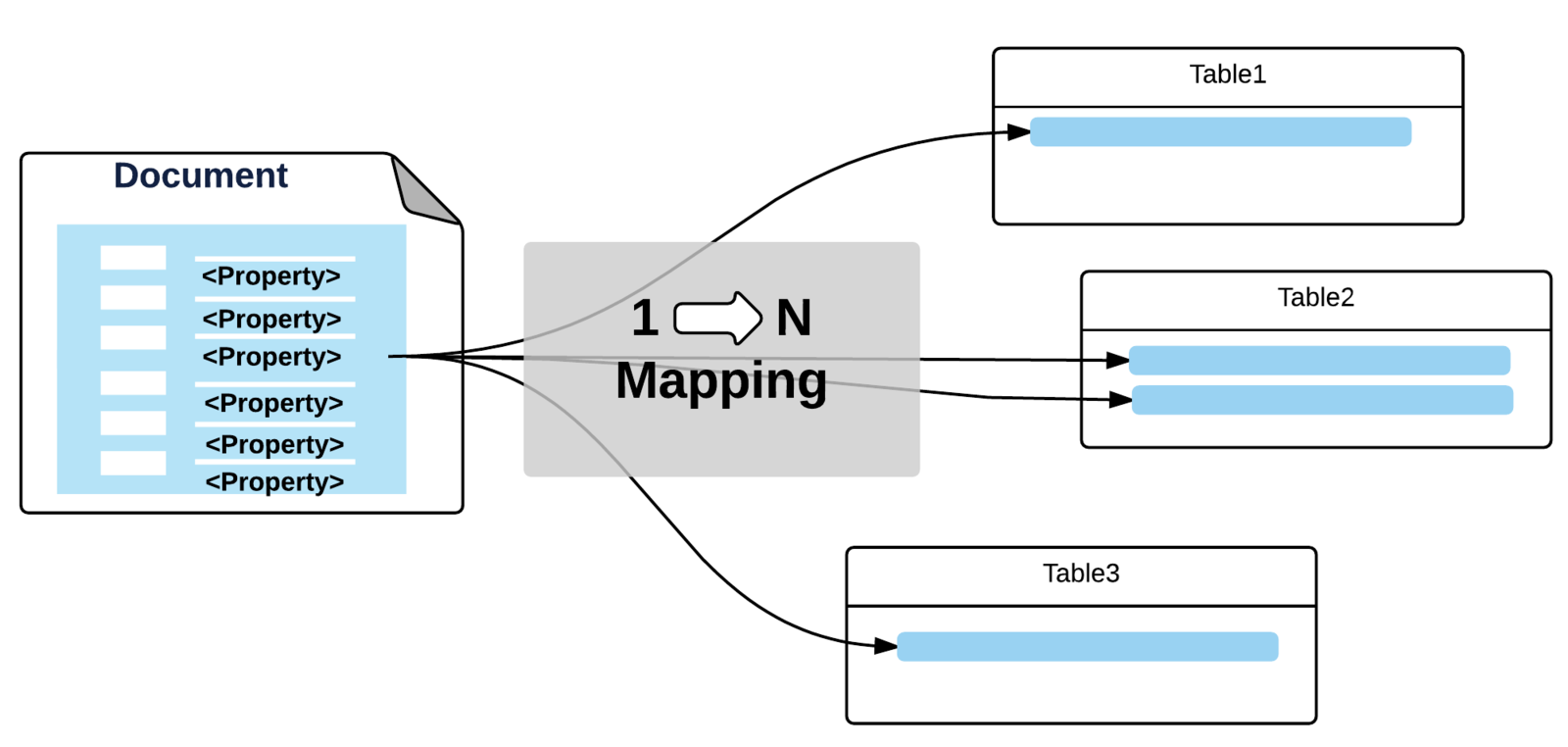Using MongoDB
to build a fast and scalable Content Repository

Some Context
What we Do and What Problems We Try to Solve

Nuxeo
-
Nuxeo
- we provide a Platform that developers can use to build highly customized Content Applications
- we provide components, and the tools to assemble them
-
everything we do is open source (for real)
- various customers - various use cases
- me: developer & CTO - joined the Nuxeo project 10+ years ago




Track game builds
Electronic Flight Bags
Central repository for Models
Food industry PLM
https://github.com/nuxeo



Document Oriented Database

Document Repository
Store JSON Documents
Manage Document attributes,
hierarchy, blobs, security, lifecycle, versions
DOCUMENT REPOSITORY & Storage Abstraction
-
Be able to choose the right storage
-
depending on the constraints
- Large volume, ACID constraints
-
depending on the envrionment
-
Test, Dev, Production
-
Test, Dev, Production
-
depending on the constraints
-
Make it transparent
- at the code level
- at the query level


Document Repository & Model
-
Content Model
- define Types (schemas)
- define Facets (mixins)
- define Hierarchy
-
define Relationships
-
But this is not schema-less ?!
-
Applications always have an implicit schema : the model
- better manage this as a configuration than simply "hope for the best"
-
the important part is to not have to handle the schema by hand
- data structure mapping & validation
-
Applications always have an implicit schema : the model


Document Repository
- Manage Data level Security
- Document level permissions
-
Blob level permissions
-
Versioning
-
Keep track of changes
-
Keep track of changes
-
Life-Cycle
-
Define valid states
-
Define valid states
-
Blob management
- Efficient storage & CDN


History : Nuxeo repository & Storage
-
2006: Nuxeo Repository is based on ZODB (Python / Zope based)
-
This is not JSON in NoSQL, but Python serialization in ObjectDB
-
Conccurency and performances issues, Bad transaction handling
-
-
2007: Nuxeo Platform 5.1 - Apache JackRabbit (JCR based)
-
Mix SQL + Java Serialization + Lucene
-
Transaction and consistency issues
-
-
2009: Nuxeo 5.2 - Nuxeo VCS
-
SQL based repository : MVCC & ACID
-
very reliable, but some use cases can not fit in a SQL DB !
-
-
2014: Nuxeo 5.9 - Nuxeo DBS
-
Document Based Storage repository
-
MongoDB is the reference backend
-


Object DB
Document DB
SQL DB
From Sql to NoSQL
Understanding the motivations
for moving to MongoDB

SQL based Repository - VCS
Search API is the most used :
search is the main scalability challenge


KEY Limitations of the SQL approach
- Impedance issue
- storing Documents in tables is not easy
-
requires Caching and Lazy loading
-
Scalability
- Document repository can become very large (versions, workflows ...)
-
scaling out SQL DB is very complex (and never transparent)
-
Concurrency model
- Heavy write is an issue (Quotas, Inheritance)
- Hard to maintain good Read & Write performances



Need a different storage model !

From SQL to No SQL



No SQL with Mongodb

-
No Impedance issue
-
One Nuxeo Document = One MongoDB Document
-
One Nuxeo Document = One MongoDB Document
-
No Scalability issue for CRUD
-
native distributed architecture allows scale out
-
native distributed architecture allows scale out
-
No Concurrency performance issue
-
Document Level "Transactions"
-
Document Level "Transactions"
-
No application level cache is needed
- No need to manage invalidations
REALLY ?

Let's do some benchmarks of Nuxeo + MongoDB
to check that it is true!
Continuous Benchmarks
-
Low level read (fast re-indexing with elasticsearch)
-
3,500 documents/s using SQL backend
-
10,000 documents/s using MongoDB (+180%)
-
- Read via REST API (misc Read APIs)
- Update via REST API

Raw performances
Single Server
6 core HT 3.5Ghz
126 GB RAM
std hdd


Benchmarking Mass Import




SQL
with tunning


commodity hardware
SQL
Benchmarking Scale out
-
1 Nuxeo node + 1 MongoDB node
-
1900 docs/s
-
MongoDB CPU is the bottleneck (800%)
-
-
2 Nuxeo nodes + 1 MongoDB node
-
1850 docs/s
-
MongoDB CPU is the bottleneck (800%)
-
-
2 Nuxeo nodes + 2 MongoDB nodes
-
3400 docs/s when using read preferences
-




Adding one MongoDB node adds 80% throughput
Use massive read operations and queries.
Benchmarking Scale out
-
Yes: this kind of setup is possible using SQL DB too
-
But:
-
setup is usually not that simple
-
MongoDB ReplicatSet is easy
-
-
impacts at Transaction Manager level
-
read-only routing encapsulated in MongoDB client
-
-


Impact on Nuxeo


-
Faster: for both Read and Write
-
Volume: on commodity hardware
-
Architecture: scale out compliant
That's why we integrated MongoDB

let's see the technical details
Integrating MongoDB
Inside nuxeo-dbs storage adapter

Document base Storage & Mongodb


Document base Storage & Mongodb


Storing Nuxeo Documents in MongoDB
- a Nuxeo Repository is a MongoDB Collection
-
a Nuxeo Application can be connected to several repositories
-
a Nuxeo Application can be connected to several repositories
- Documents are stored using their JSON representation
-
Property names fully prefixed
- Lists as arrays of scalars
- Complex properties as sub-documents
- Complex lists as arrays of sub-documents
-
Id generated by Java UUID
• In debug mode : Counter using findAndModify, $inc and returnNew
-
Property names fully prefixed

Storing Nuxeo Documents in MongoDB

{
"ecm:id":"52a7352b-041e-49ed-8676-328ce90cc103",
"ecm:primaryType":"MyFile",
"ecm:majorVersion":NumberLong(2),
"ecm:minorVersion":NumberLong(0),
"dc:title":"My Document",
"dc:contributors":[ "bob", "pete", "mary" ],
"dc:created": ISODate("2014-07-03T12:15:07+0200"),
...
"cust:primaryAddress":{
"street":"1 rue René Clair", "zip":"75018", "city":"Paris", "country":"France"},
"files:files":[
{ "name":"doc.txt", "length":1234, "mime-type":"plain/text",
"data":"0111fefdc8b14738067e54f30e568115"
},
{
"name":"doc.pdf", "length":29344, "mime-type":"application/pdf",
"data":"20f42df3221d61cb3e6ab8916b248216"
}
],
"ecm:acp":[
{
name:"local",
acl:[ { "grant":false, "perm":"Write", "user":"bob"},
{ "grant":true, "perm":"Read", "user":"members" } ]
}]
...
}-
40+ fields by default
- depends on config
- 18 indexes
hIERARCHY
- Parent-child relationship
-
Recursion optimized through array
• Maintained by framework (create, delete, move, copy)

ecm:parentId
ecm:ancestorIds
{ ...
"ecm:parentId" : "3d7efffe-e36b-44bd-8d2e-d8a70c233e9d",
"ecm:ancestorIds" : [ "00000000-0000-0000-0000-000000000000",
"4f5c0e28-86cf-47b3-8269-2db2d8055848",
"3d7efffe-e36b-44bd-8d2e-d8a70c233e9d" ]
...}Security
- Generic ACP stored in ecm:acp field
- Precomputed Read ACLs to avoid post-filtering on search
• Simple set of identities having access
• Semantic restrictions on blocking
• Maintained by framework
• Search matches if intersection

ecm:racl: ["Management", "Supervisors", "bob"]db.default.find({"ecm:racl": {"$in": ["bob", "members", "Everyone"]}}){...
"ecm:acp":[ {
name:"local",
acl:[ { "grant":false, "perm":"Write", "user":"bob"},
{ "grant":true, "perm":"Read", "user":"members" } ]}]
...}SEARCH

db.default.find({
$and: [
{"dc:title": { $in: ["Workspaces", "Sections"] } },
{"ecm:racl": {"$in": ["bob", "members", "Everyone"]}}
]
}
)SELECT * FROM Document WHERE dc:title = 'Sections' OR dc:title = 'Workspaces'
Consistency Challenges
- Unitary Document Operations are safe
- No impedance issue
-
Large batch updates is not so much of an issue
-
SQL DB do not like long running transactions anyway
-
SQL DB do not like long running transactions anyway
- Multi-documents transactions are an issue
- Workflows is a typical use case
- Isolation issue
- Other transactions can see intermediate states
- Possible interleaving

Find a way to mitigate consistency issues
Transactions can not span across multiple documents


Mitigating consistency issues
-
Transient State Manager
-
Run all operations in Memory
- Flush to MongoDB as late as possible
-
Populate an Undo Log
- Replay backward in case of Rollback
-
Run all operations in Memory


- Recover partial Transaction Management
-
Commit / Rollback model
-
Commit / Rollback model
- But complete isolation is not possible
- Need to flush transient state for queries
-
"uncommited" changes are visible to others
- "read uncommited" at best
Speed vs TRANSACTIONS Reliability
- This is still far from being ACID, but
-
it converges to something consistent
- Eventually consistent
-
we improved Isolation and Atomicity
-
it converges to something consistent
- Usual trade-off between speed and consistency
- This is good enough for most use cases
-
Even in pure SQL there are some concessions on ACID
- ex : read commited vs repeatable reads


When to use MongoDB over traditional SQL ?

MongoDB repository
Typical use cases

There is not one unique solution

-
Use each storage solution for what it does the best
-
SQL DB
-
store content in an ACID way
-
consistency over availability
-
-
MongoDB
-
store content in a BASE way
-
availability over consistency
-
-
elasticsearch
-
provide powerful and scalable queries
-
-
Storage does not impact application : this can be a deployment choice!



Atomic Consistent
Isolated Durable
Basic Availability
Soft state
Eventually consistent
Ideal use cases for Mongodb

HUGE Repository - Heavy loading
-
Massive amount of Documents
-
x00,000,000
-
Automatic versioning
- create a version for each single change
- create a version for each single change
-
x00,000,000
-
Write intensive access
- daily imports or updates
-
recursive updates (quotas, inheritance)

SQL DB collapses (on commodity hardware)
MongoDB handles the volume


Benchmarking Read + Write



Read & Write Operations
are competing
Write Operations
are not blocked
C4.xlarge (nuxeo)
C4.2Xlarge (DB)
SQL
Benchmarking Mass Import
- Import 20,000 documents
- 750 documents/s with SQL backend
- 1,400 documents/s with MongoDB/mmapv1
-
3,200 documents/s with MongoDB/wiredTiger
-
Import 100,000 documents
- 550 documents/s with SQL backend
- 1,250 documents/s with MongoDB/mmapv1
- 3,150 documents/s with MongoDB/wiredTiger

low level import on AWS

about 5x faster !
Data LOADING Overflow
-
Lot of lazy loading
- Very large Objects = lots of fragments
-
lot of lazy loading = create latency issues
-
Cache trashing issue
- SQL mapping requires caching
- read lots of documents inside a single transaction

MongoDB has no impedance mismatch
- no lazy loading
- fast loading of big documents
- no need for 2nd level cache

Side effects of impedance miss match

Benchmarking impedance effect
- Process 20,000 documents
- 700 documents/s with SQL backend (cold cache)
-
6,000 documents/s with MongoDB / mmapv1: x9
-
11,000 documents/s with MongoDB / wiredTiger: x15
-
Process 100,000 documents
- 750 documents/s with SQL backend (cold cache)
-
9,500 documents/s with MongoDB / mmapv1: x13
-
11,500 documents/s with MongoDB / wiredTiger: x15
- Process 200,000 documents
- 750 documents/s with SQL backend (cold cache)
-
14,000 documents/s with MongoDB/mmapv1: x18
-
11,000 documents/s with MongoDB/wiredTiger: x15
processing benchmark
based on a real use case

ROBUST architecture

native distributed architecture
- ReplicaSet : data redundancy & fault tolerance
- Geographically Redundant Replica Set : host data on multiple hosting sites

active
active
A REAL LIFE EXAMPLE

A real life example - Context
-
Who: US Network Carrier
-
Goal: Provide VOD services
- Requirements:
- store videos
- manage meta-data
- manage workflows
- generate thumbs
- generate conversions
- manage availability

They chose Nuxeo to build their Video repository

A real life example - Challenges
- Very Large Objects:
-
lots of meta-data (dublincore, ADI, ratings ...)
-
lots of meta-data (dublincore, ADI, ratings ...)
- Massive daily updates
-
updates on rights and availability
-
updates on rights and availability
- Need to track all changes
- prove what was the availability for a given date

looks like a good use case for MongoDB
lots of data + lots of updates



A real life example - MongoDB choice
-
because they have a good use case for MongoDB
-
Lots of large objects, lots of updates
-
Lots of large objects, lots of updates
-
because they wanted to use MongoDB
- change work habits (Opensouces, NoSQL)
- doing a project with MongoDB is cool

they chose MongoDB

they are happy with it !
Next steps
Going further with MongoDB

Next steps
- Leverage more the MongoDB Batch API
- expose similar Batch API at Nuxeo level
-
use inside DBS internal implementation
- Make Write Concerns levels configurable
-
allow to fire "async processing"
-
allow to fire "async processing"
- Use GridFS for Blob storage
- store everything inside MongoDB cluster

Any Questions ?
Thank You !

https://github.com/nuxeo
http://www.nuxeo.com/careers/
Using MongoDB to build a fast and scalable content repository
By Thierry Delprat
Using MongoDB to build a fast and scalable content repository
MongoDB can be used in the Nuxeo Platform as a replacement for more traditional SQL databases. Nuxeo's content repository, which is the cornerstone of this open source software platform, can now completely rely on MongoDB for data storage. This presentation will explain the motivation for using MongoDB and will emphasize the different implementation choices driven by the very nature of a NoSQL datastore like MongoDB. It will give you the opportunity to see how the integration in the Nuxeo Platform was achieved and what benefits were gained: increased performance (with actual benchmarks) and better response to some use cases.
- 16,985



